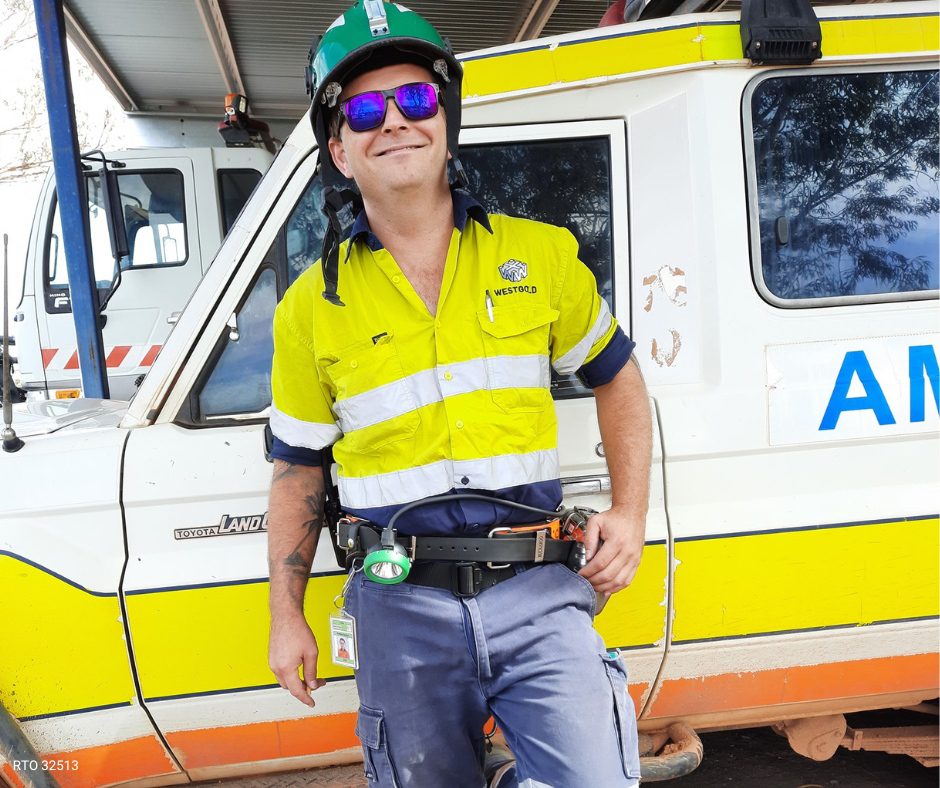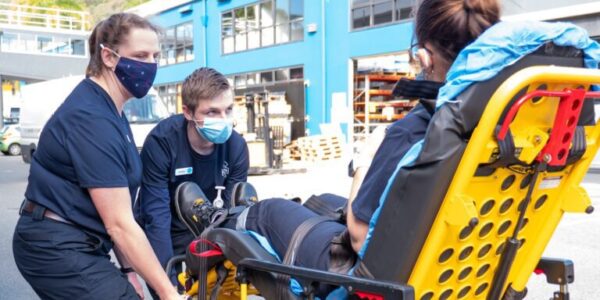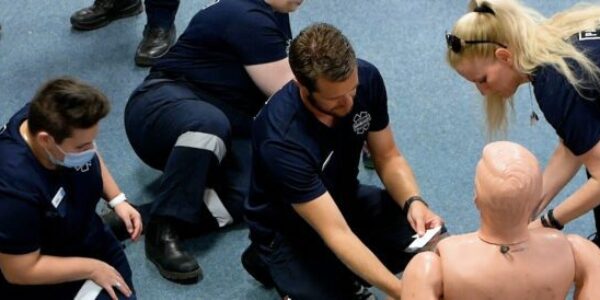Re-published 28th of February, 2024.
For most, becoming a Paramedic isn’t about the money or salary. It’s a life-long dream allowing you to give back to your community by caring for someone in their time of need. This privilege often means that the reasons for studying paramedicine are more heart-felt than money-driven.
Despite this, years of service, education and efforts on the job certainly don’t go without notice for Paramedics or similar emergency response workers such as Ambulance Officers, Nurses, EMT’s and more, leaving individuals rewarded well for the services they provide.
Qualified and experienced Paramedics can earn over $100,000
That’s right! Paramedics are thrust into the call of duty during emergencies, often tasked with the role of providing life-saving medical treatment on the spot, daily. But this isn’t just limited to paramedicine.
Pre-hospital/out-of-hospital care is the environment that many emergency response workers (such as Paramedics) work within, shared with firefighters, police officers and more. Like one another, their civil duties are sometimes challenging and within unpredictable conditions. With a working day spanning more than the traditional 8-hour day, paramedics can often find themselves working extra hours, earning overtime with additional allowances thrown in.
 APC Diploma graduate and Trainer and Assessor, Nathan Seidel working as a Paramedic Emergency Medical Officer.
APC Diploma graduate and Trainer and Assessor, Nathan Seidel working as a Paramedic Emergency Medical Officer.
So, what do Paramedic/Ambulance Officers earn?
The first thing to know about salaries, whether working as a Paramedic or not is that they will vary, depending where you reside in Australia or the globe.
As an example, in Melbourne, Victoria, a first-year advanced life support paramedic can have a median rate of $72,000, with an average of $103,000 per year for more seasoned paramedics*.
Queensland Paramedics can expect to earn a salary of $94,050 per year, plus overtime and additional payments*.
Paramedics working in Adelaide can earn up to $125,000 annually.
A Paramedic in the ACT can have pay that ranges from $80,000 to $100,000 per year*.
A Paramedic working for in the Northern Territory could expect to come home with a salary of $121,007 per year*.
Finally, a Paramedic in Sydney, New South Wales could earn just under $100,000 a year.
*Sources: payscale (2023), indeed (2023), Jora (2023), indeed (2023.
It is important to know that being a Paramedic isn’t the only way to save lives. There are many high-earning career pathways one can take in the emergency or non-emergency healthcare sector that fulfil career wants and needs. To pursue reading on each, you can check out some of APC’s popular career pathways here.
Let’s talk more specifics on salaries below.
Queensland (QLD) Ambulance Service Paramedic salaries*:
|
Job Title |
Salary/Wage |
|
QLD Paramedic Student/Paramedic |
$66,100 – $88,104 |
|
QLD Advanced Care Paramedic |
$81,894 – $101,331 |
|
QLD Intensive Care Paramedic |
$103,574 – $127,316 |
|
QLD Station Officer |
$113,671 – $125,564 |
*Source: Queensland Industrial Relations Commission (2023)
New South Wales (NSW) Ambulance Service Paramedic salaries*
|
Job Title |
Salary/Wage |
|
NSW Patient Transport Officer |
$56,940 – $59,436 |
|
NSW Paramedic Intern |
$68,328 – $69,628 |
|
NSW Paramedic |
$74,100 – $79,456 |
|
NSW Extended Care Paramedic |
$85,384- $90,374 |
|
NSW Critical Care Paramedic (aeromedical) |
$95,576 – $98,020 |
*Source: NSW Government (2023)
Australian Capital Territory (ACT) Ambulance Service Paramedic salaries*
|
Job Title |
Salary/Wage |
|
ACT Ambulance Support Officer |
$61,197 – $87,032 |
|
ACT Patient Transport Officer |
$61,197 – $75,539 |
|
ACT Student Ambulance Paramedic |
$79,066 – $96,112 |
|
ACT Ambulance Paramedic 1 and 2 |
$97,761 – $141,611 |
|
ACT Intensive Care Paramedic 1 and 2 |
$112,814 – $158,703 |
*Source: ACT Government (2023)
Victorian (VIC) Ambulance Service Paramedic salaries*
|
Job Title |
Salary/Wage |
|
VIC Patient Transport Officer |
$56,264 – $58,448 |
|
VIC Ambulance Attendant |
$59,958 – $63,076 |
|
VIC Basic Life Support Ambulance Paramedic |
$70,980 – $75,244 |
|
VIC Advanced Life Support Ambulance Paramedic |
$77,584 – $84,500 |
|
VIC Mobile Intensive Care Ambulance Paramedic |
$87,776 – $95,628 |
*Source: Ambulance Victoria (2023)
St John Ambulance Western Australia (WA) Paramedic salaries*
|
Job Title |
Salary/Wage |
|
WA Ambulance Officer |
$79,037 – $87,354 |
|
WA Ambulance Paramedic |
$102,983 – $113,876 |
|
WA Critical Care Paramedic |
$132,449 |
|
WA Clinical Support Paramedic |
$132,449 |
|
WA Community Paramedic |
$132,449 |
*Source: St John WA (2023)
St John Ambulance Northern Territory (NT) Paramedic salaries*
|
Job Title |
Salary/Wage |
|
NT Patient Transport Officer |
$87,106 – $94,848 |
|
NT Intern Paramedic |
$109,404 |
|
NT Qualified Paramedic |
$113,308 – $119,196 |
|
NT Intensive Care Paramedic |
$127,798 – $161,840 |
*Source: FairWork Commission (2023)
Tasmanian (TAS) Ambulance Service Paramedic salaries*
|
Job Title |
Salary/Wage |
|
TAS Paramedic Student |
$47,832 – $55,306 |
|
TAS Paramedic |
$62,998- $72,447 |
|
TAS Intensive Care Paramedic |
$75,597 – $78,747 |
|
TAS Flight Paramedic |
$85,677 |
|
TAS Extended Care Paramedic |
$87,463 |
*Source: Tasmanian Industrial Commission (2023)
Ambulance Paramedic salary – Australia
There are several factors that influence your salary – whether or not you wish to work as a Paramedic. It comes down to the level of training, and their prior experience too. It’s important to note that working for your state’s ambulance service (the public sector) isn’t the only way to become a paramedic although – a plethora of opportunities exist within the private sector too.
Jobs within the private sector are those which aren’t government funded and on occasion, can result in a higher Paramedic salary too. This is due to a private company being more willing to pay you a higher rate due to the expectation to work a 7-7 roster, or even in a remote location (think of mining or the resource sector). As you can see above, where you reside has an impact on your salary.
It is common for your salary to increase working in more robust states/territories as the cost of living is generally higher. The exception to this rule is when working in a remote location, and if you have a highly regarded skillset meaning that people are willing to pay you more as they need you more. You can find this often in the mining sector with paramedics and Medical Emergency Services Officers (MESOs) who can earn upwards of $100,000-$190,000. Find more about MESO jobs in the mines here.
Ambulance Paramedic salaries vary significantly based on the demand of individuals, their experience and the need for dedicated paramedics increase. As a registered paramedic, you are free to travel interstate and work for any jurisdictional ambulance service. Given the current health crisis in Australia, there are some great opportunities to get into health care.
What does it take to become a Paramedic?
You may hear from paramedics that while the paramedic salary in Australia is good, it isn’t money that drives them to enter the profession. After all, it is a very challenging yet rewarding job that takes a lot of heart. Paramedics are often driven by the desire to help people in their hour of need, the diversity in a day’s work and contributing to their community.
How to become a Paramedic
To become a registered Paramedic in Australia today, a Bachelor of Paramedic Science degree (or similar) is required. The HLT50120 – Diploma of Emergency Health Care, (formerly known as HLT51015 – Diploma of Paramedical Science) can offer the perfect pathway into university, and this bachelor.
Nationally-recognised, Australian Paramedical College’s (APC’s) Diploma thoroughly prepares undergraduates to transition into university, making the whole experience more enjoyable and less stressful. Depending on which university you choose, it’s quite common for diploma-qualified applicants to be awarded degree credits of up to 33%.
If you’re unsure yet if the paramedicine pathway is for you, another option is to consider roles such as non-emergency patient transport officer, or medics. These pathways can be undertaken by studying APC’s HLT41120 – Certificate IV in Health Care or HLT31120 – Certificate III in Non-Emergency Patient Transport.
What’s the difference between a Registered Ambulance Paramedic and a Diploma-qualified Medic?
After graduating from APC’s HLT51020 – Diploma of Emergency Health Care, individuals can look to pursue employment as Event Medics, Medical Emergency Services Officers, Emergency Medical Technicians (EMTs), and even in some states, Patient Transport Officers.
The Diploma is the highest-level qualification within the Vocational Education and Training (VET) sector which essentially means that it is just the step below a bachelor. As a Bachelor-qualified paramedic vs. a Diploma-qualified medic, you’re able to treat more advanced injuries/illnesses, with more advanced medications and treatments.
APC is here to help
If you’re looking to understand how the Diploma can assist in your entry to university, or how to pursue education to become a Diploma-qualified medic, you’ve come to the right place.
APC has 10+ years of specialising in pre-emergency healthcare training, being known as Australia’s leading emergency and non-emergency healthcare education provider. As a student, you can study online, to later complete hands-on Clinical Workshops and Clinical Placement to get you qualified in the shortest period possible. Click the button below to apply today.
To learn more about how to become a paramedic, we recommend checking out this helpful page too!


